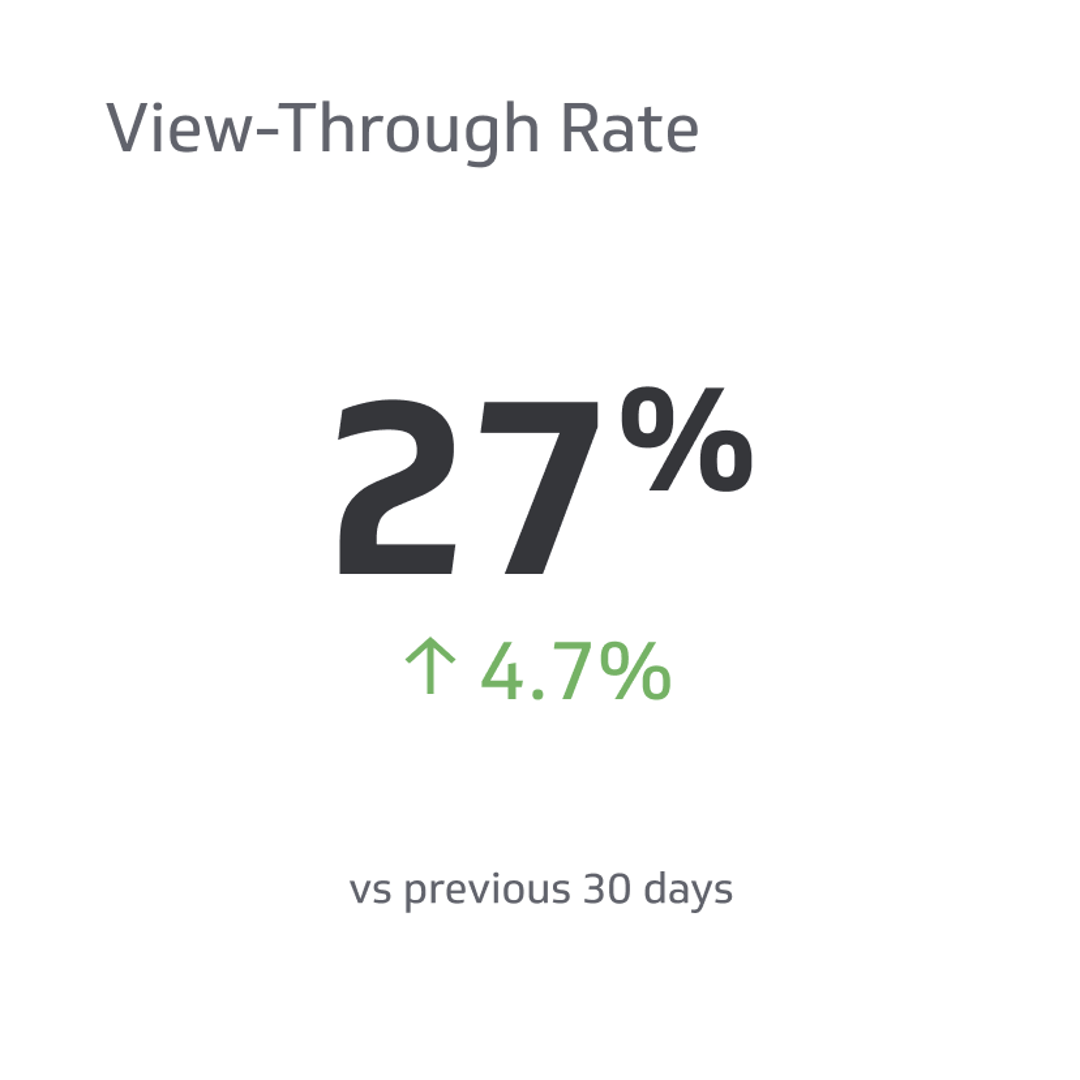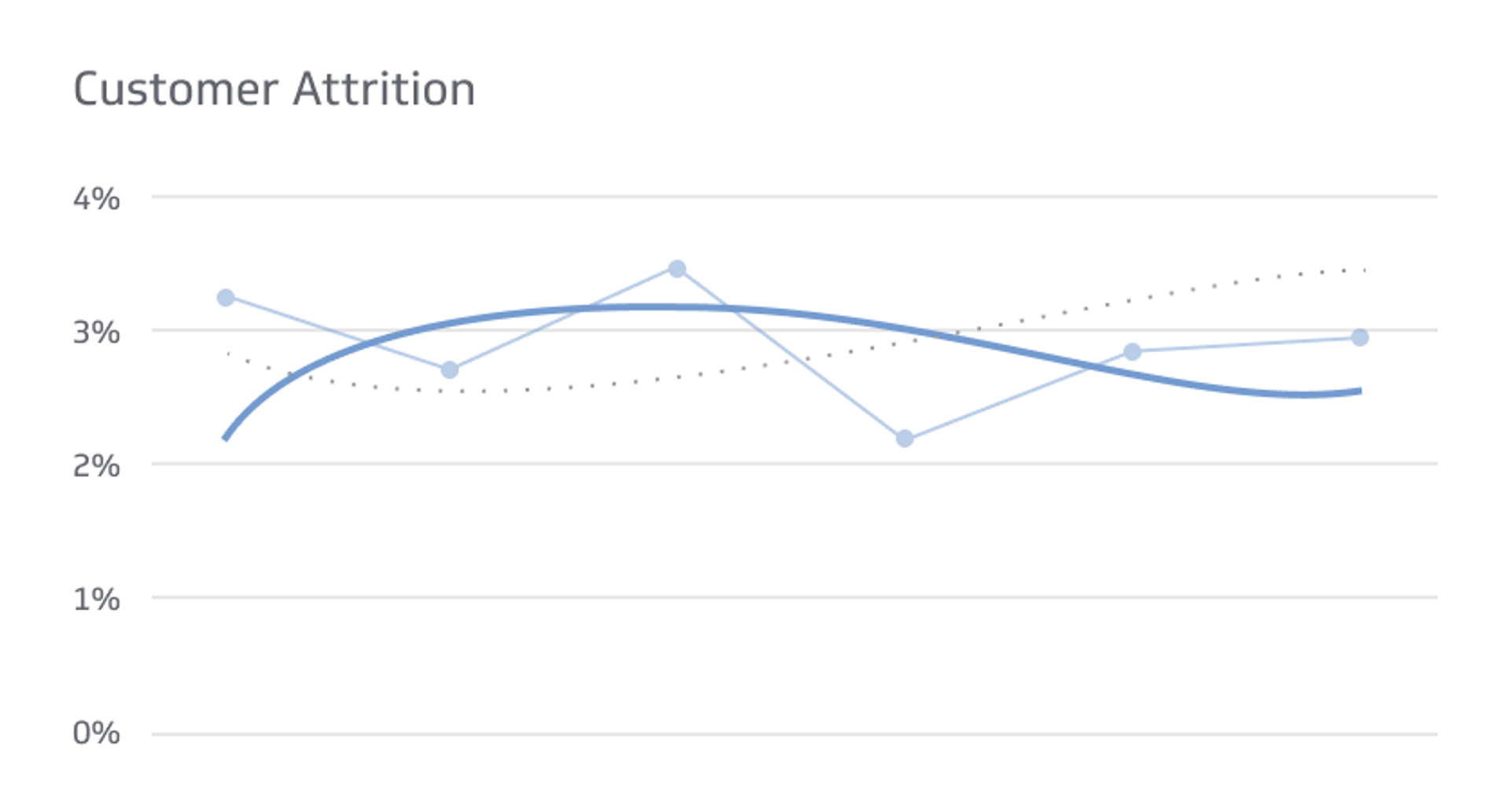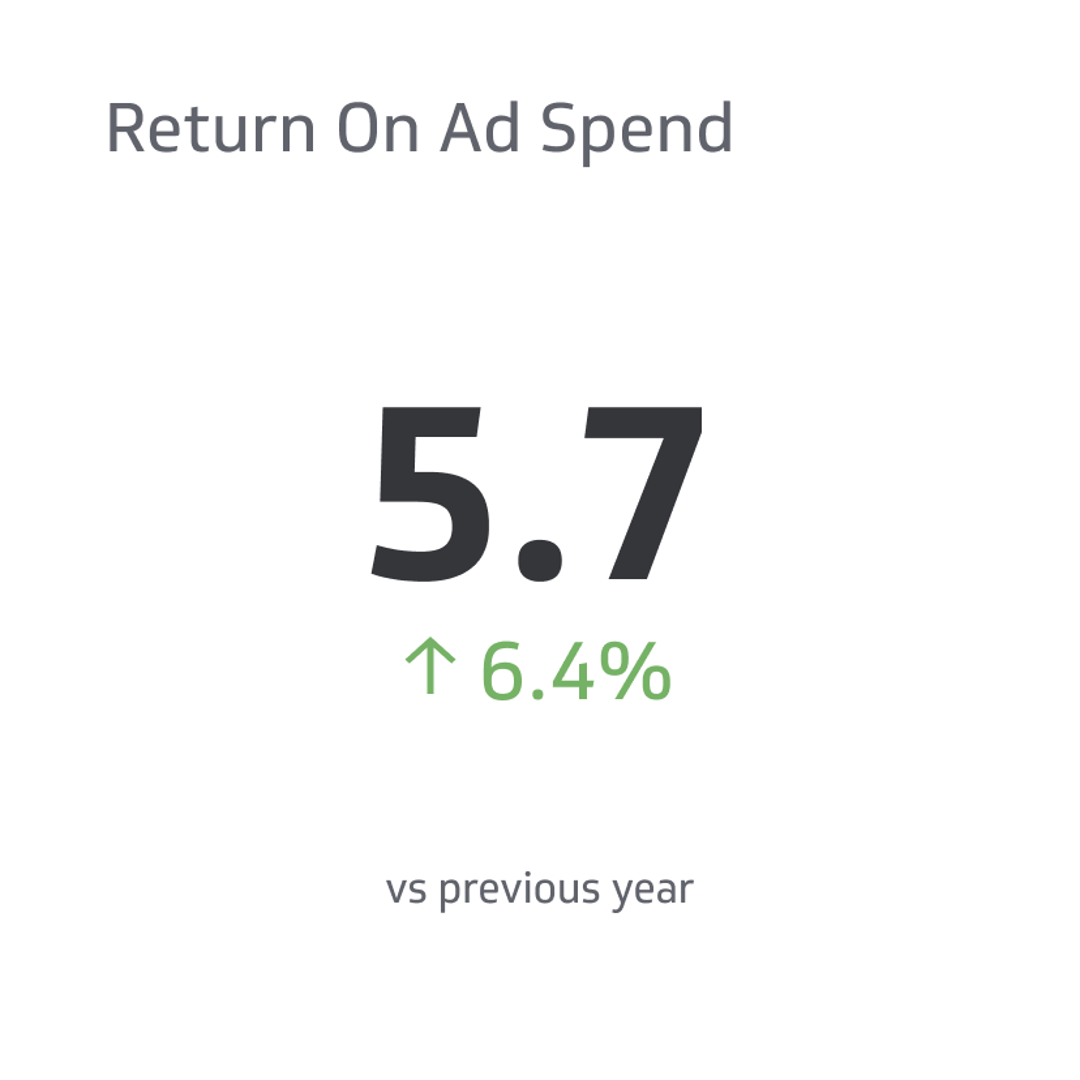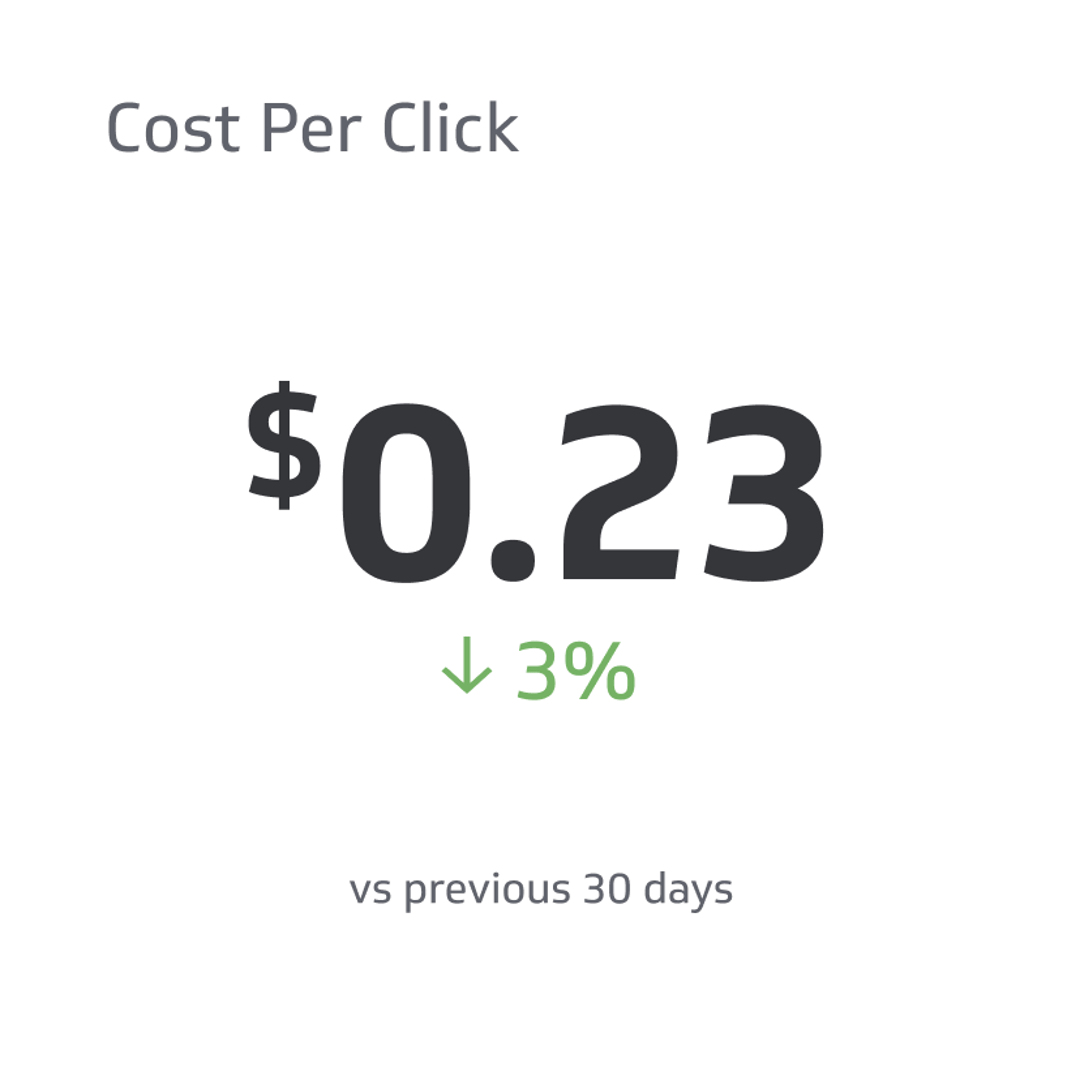View Through Rate (VTR)
View-through rate is a metric that calculates how many people watch a skippable ad through to the end.
Track all your Digital Marketing KPIs in one place
Sign up for free and start making decisions for your business with confidence.

In an era where data is king, understanding the nuances of digital marketing metrics has become crucial for businesses aiming to succeed in the digital landscape. One such vital metric is the 'View Through Rate' (VTR), a term often bandied about in discussions of advertising campaign effectiveness but one that remains enigmatic for many.
In this article, we aim to demystify this concept, delving into its definition, significance, calculation, and the insights it can provide. Whether you're a marketing veteran or a newcomer to digital advertising, this comprehensive guide to understanding View Through Rate is for you.
Defining View Through Rate?
View-through rate is a metric that calculates how many people watch a skippable ad through to the end. It does not apply to unskippable ads, where customers usually have little choice except to view the whole thing. This is why VTR applies mainly to digital ads rather than those on television.
VTR is a second-tier metric for monitoring performance. It’s not as important as factors like click-through rate, but it can provide additional context and help you understand where to focus on improving your video ads.
Calculating VTR
You can calculate view-through rate by dividing the total completed views of an ad by its overall impressions, then multiplying the result by 100 to get a percentage.
Let’s say you have an ad that plays to 10,000 people, and 50 watch it through to completion. We divide 50 by 10,000 to get 0.005, then multiply it by 100 to reach 0.5%.
Understanding VTR
In most cases, VTR alone does not provide a comprehensive look at the value of your ads. Instead, you need to look at other data to understand what’s going on with your ads.
For example, you can decide to look at VTR for percentage-based completion of the video and see how many viewers are making it halfway through the ad. If you see a dropoff before you even hit the halfway point, you may need to improve your ads and grab people’s attention better.
VTR may also need to account for how many people click to buy a product. They may not finish the ad if they leave the video website to purchase something. This means that VTR does not directly reflect profits and does not necessarily indicate the overall success of an ad.
What Is a Good View-Through Rate?
A 15% VTR is good enough for most companies. The simple truth is that many people will skip ads from habit alone, so you can’t expect to get much higher than this on any skippable advertisement.
How To Improve View-Through Rate?
There are a few ways you can improve your view-through rate. Once you hit about 15%, you can stop investing in improvements because you’re not likely to see any real return on your investment past that.
Focus on Storytelling
The most successful ads are more like short movies than direct ones. Engaging the audience with storytelling can encourage them to stick around and see the result of something.
In contrast, if your ad is too focused on sales, most people will habitually ignore it and skip it the first moment they can. Remember, they’re probably trying to watch another video. If you’re not giving them something better than what they clicked on to watch, it makes sense they won’t be interested.
Audience Targeting
Most video ad platforms have excellent audience targeting; you should use this fully. Showing ads to people naturally interested in your product can immediately raise your VTR to a healthier level.
Shorten Ads
Shorter video ads usually work better than longer ones. 30 seconds is suitable for most companies because it gives enough time to tell a short story. Still, it won’t be long before customers get truly upset.
Short videos also cost considerably less to produce than longer ones. The difference between a single day for ad production can be thousands of dollars, so it’s much easier to get a good return on your investment if you focus on shorter, lower-cost ads.
Place Video Ads Better
It doesn’t make much sense to place video ads on pages where customers have a lot of other things to look at and interact with. The more they have to engage with, the higher the chance they’ll ignore the ad and focus on something else.
The best spot for a video ad is somewhere free of distractions and without urgency on the viewer’s part. For example, you should never put a feel-good advertisement immediately before a first-aid video. If people need real help, they might blame your company for any losses they suffer.
Keep Ads Skippable
While it can be tempting to focus on unskippable ads, this usually works out less effectively in the long run.
Anyone inclined to skip an ad as soon as they can doesn’t care what you have to say, and you won’t convince them otherwise. Letting them skip the ad keeps them happy with the website and enables you to focus your efforts on those who watch the video.
Essentially, having skippable ads lets you select people more likely to buy. It also gives sites better metrics to understand what ads each user is expected to watch, making it easier to place ads effectively.
Frequently Asked Questions
Here are some common questions people have about view-through rates.
What’s the difference between the view-through rate and the view-completion rate?
VTR and VCR are essentially the same metrics, but some companies prefer using one name.
Should VTR be high?
Not always. While it may seem like having a high view-through rate is always ideal, it doesn’t mean anything if people aren’t converting to customers. Instead, you should look at VTR as a metric for helping you understand where to focus your efforts on improvement.
Does VTR vary by platform?
Yes. Some platforms innately have a higher VTR than others. For example, Facebook can be as high as 30%. In most cases, the distinction doesn’t matter because you should focus on the platform with the best return on investment, not the highest VTR.
Final Thoughts
View-through rate is an excellent second-tier metric to help improve your advertising. Don’t rely on the above things like click-through rate, but check the different viewing levels occasionally so you can see how your ads are performing.
Related Metrics & KPIs



